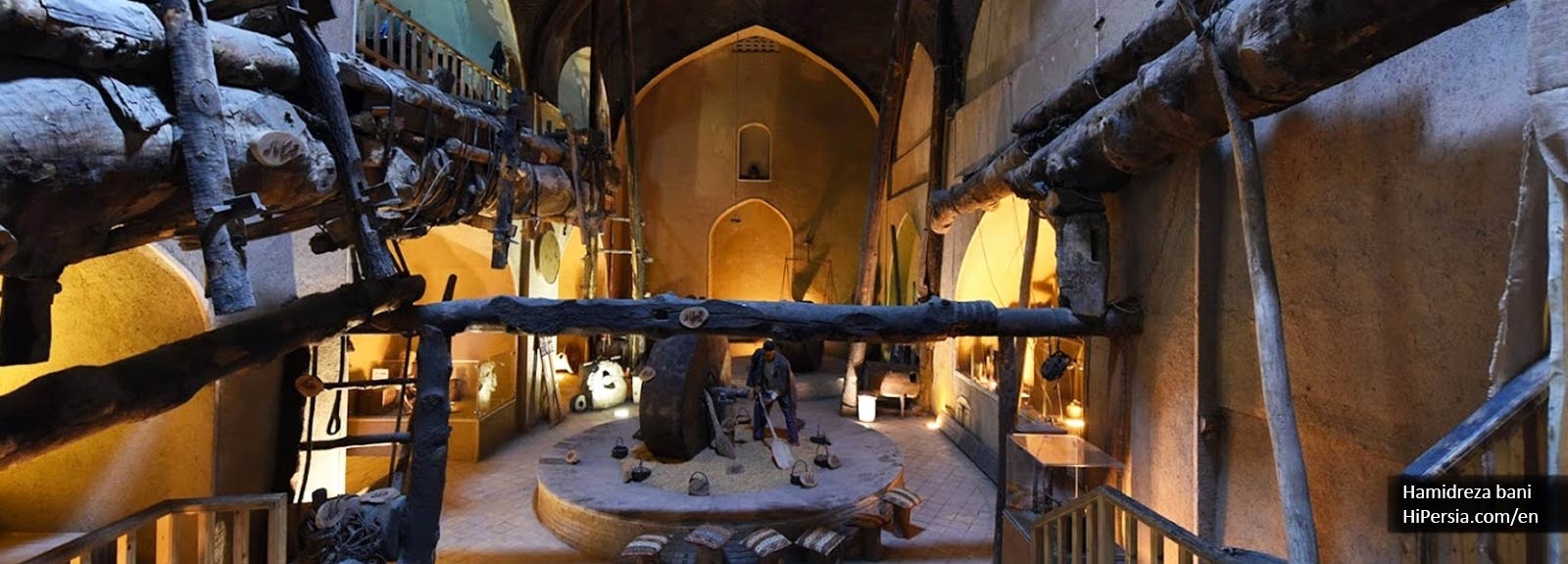



The Assarkhane was referred to special mills, which were used to grind stuff such as stones, turmeric and pepper, and… in the ancient cities of Iran.
The Assarkhane Shahi Isfahan is hidden among the bazaars of the Naqsh-e Jahan Square and it is one of the remains of Assarkhane from the past that draw the eyes of visitors to the early technology of the people who lived in the last centuries.
In fact, Assarkhane is the oil-extracting factory in which the roasted seeds such as castor, sesame, poppy and sunflower were ground and the extracted oils used in food preparation, soap production and in oil lamps. The existing Assarkhane’s equipment includes: two large round millstones that revolved on each other by Ox or camel to grind the seeds and the plantain's trunks that fastened together and use for pressing the grinding seeds. It’s interesting to know that the Assarkhane was built afterward the plantain's trunks had been housed there due to the enormous size of the trunks. The construction, operation of the Assarkhane Shahi was simultaneous with the grand bazaar of Isfahan and Molla Abdollah School and was built under the govern of 1st Shah Abbas in Safavid era. The Assarkhane Shahi had an important role in producing oil in the Safavid era due to the high production capacity of Assarkhane. Currently, The Assarkhane Shahi Isfahan is used as a museum to showcase the early equipment in the oil industry.

The Assarkhane Shahi with an approximate area of 380 square meters is one of the most important historical and tourist attractions of Isfahan province that located in the proximity of Naqsh-e Jahan Square, at the beginning of Mokhles Bazaar and facing the Isfahan gold Bazaar. The main area of the Assarkhane Shahi was 1,800 square meters in which some portions such as stall, dock and the Assarkhane entrance have been destroyed.

When you enter the Assarkhane Shahi, like many other Assarkhane, step down a few steps to reach the lower basement (or pillar room) and you can observe many facts such as stones, barrels, and... that show clearly the history of Assarkhane. The building has one floor and is designed in three-domed ceiling spaces with 11 meters in height. The shape of ceilings helps to store the extracted oil at a lower temperature. The seeds were ground down by revolting the millstones and then, the masses of the resultant pulp were flattened on the woven stuff that was made from palm leaves. Then, one by one put them on each other in a wooden cylindrical jar to press them with a large beam and collect the extracted oil in a barrel.
You can get the Assarkhane Shahi at any time and it is open every day except Fridays from 9 AM till 5 PM. The entrance fee to Assarkhane Shahi is about 2.000.000 IRR for foreign visitors.
The Assarkhane Shahi Isfahan is located in the northeast of the Naqsh-e Jahan Square at the beginning of Mokhles Bazaar and facing the Isfahan gold Bazaar. By passing through the Qeysarie Gate, you can get there via Chit Sazha Bazaar.






“Oh! Squander not this breath that Heaven hath lent thee, Nor make too sure another breath to borrow!’” Khayam